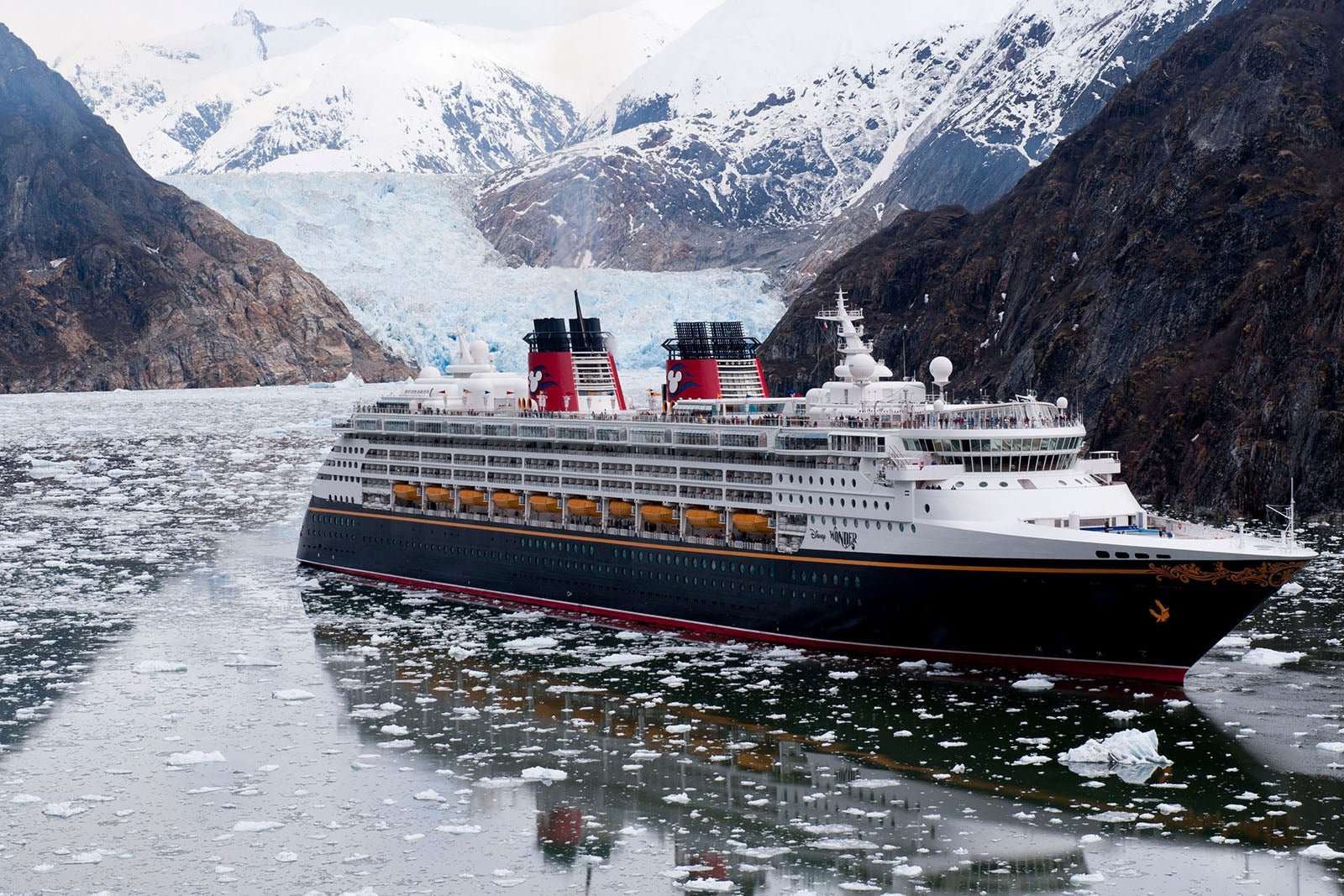At TPG, we always recommend cruising with a passport, but there are many reasons why you might want to set sail without one. What if an opportunity pops up on short notice, and you don’t have a passport yet? Or what if you forgot to renew yours when it expired? What if it’s only a three-night cruise to the Bahamas, and the passport application fee is almost as much as the cruise fare? Or, maybe you have children nearing age 16 and can’t justify paying for passports that will only be good for five years.
First of all, do you even need a passport to cruise? The answer is often but not always. You have options to cruise without a passport because not every sailing requires them. Thanks to an international agreement called the Western Hemisphere Travel Initiative, U.S. citizens can cruise on certain itineraries within North American countries using government-issued identification (like a valid driver’s license) and proof of citizenship (like a government-issued birth certificate).
The cruises that you don’t need a passport for are closed-loop sailings, which depart from and return to the same port within the U.S. One-way sailings from one U.S. port to another or from a U.S. port to a foreign one would require a passport.
Before we go further, let’s clarify that when we talk about cruising without a passport, we’re referring to pricey passport books that some travelers do not wish to purchase. Passport cards can also be used for identification when cruising in all the places we are about to discuss; these cards are a low-cost alternative to traveling with your driver’s license and birth certificate.
Let’s look at the options for where you can cruise without a passport.
**Alaska**
Cruising to Alaska is one of the easiest ways to experience all the state offers. You’ll have opportunities to see glaciers and wildlife; stroll the streets of charming coastal towns; eat your fill of local crab legs and salmon; and enjoy nature on a kayak, zip line or hike.
If you’re interested in cruising to Alaska without a passport, look for itineraries that begin (and end) in Seattle, San Francisco or southern California ports, such as Los Angeles or Long Beach, California. The most common length for these closed-loop Alaska cruises operated by the major cruise lines is seven nights. Cruises early or late in the season might be only four or five nights, and trips departing from LA are usually 14 nights.
What if you really want to cruise one-way from Canada to Alaska (or vice versa)? Although Canada prefers U.S. citizens who arrive by sea or land to have a passport book, it is not required as long as they have proper identification and proof of citizenship. The U.S., however, requires one of the following WHTI-approved forms of identification for entries by land or sea: passport card, enhanced driver’s license, I-872 American Indian card or trusted traveler program IDs like Nexus, Sentri and Fast.
Technically, if you have one of those forms of ID but not a passport book, you can take a one-way Alaska cruise — as long as you don’t have to fly to or from Canada.
More complications arise for non-passport holders who book shore excursions that involve crossing from Alaska to Canada. White Pass and Yukon Route train rides are good examples. White Pass and Yukon Route allows cruise passengers to go on the three-hour train excursion without a passport but doesn’t allow them to take any longer routes. That’s their policy, not a legal requirement.
This means that Alaska cruises are one instance when the passport card would be a handy alternative to traveling with both an ID card and a birth certificate. It opens up one-way itineraries.
**Caribbean**
A cruise to the Caribbean transports you to tropical islands bathed in turquoise waters. Whether you seek warm beaches, cool drinks, water sports or cultural education, you can find a Caribbean cruise to fit the bill.
It’s easy to cruise without a passport in the Caribbean: Just book one of the many closed-loop, round-trip sailings departing from a U.S. port. Most major cruise lines offer sailings that range between three and 15 nights from ports like Galveston, Texas; New Orleans; multiple ports in Florida (including Miami and Fort Lauderdale); Charleston, South Carolina; Baltimore; Bayonne, New Jersey; and New York City.
Most Caribbean islands participate in the WHTI, but it’s always best to check the details specific to the ports of call included in your itinerary. Don’t forget that islands such as Puerto Rico, St. Thomas, St. John and St. Croix are U.S. territories, so visits never require passports for U.S. citizens.
**Bermuda**
Bermuda is a British Overseas Territory, lying 643 miles off the coast of North Carolina. Hop on a cruise ship for a direct route to the island’s famous beaches and golf courses. Spring and summer are the prime seasons to visit, but cruises are possible throughout the year.
Cruising without a passport to Bermuda is also easy. Apart from a few isolated cruises stopping in Bermuda as they come or go from other destinations, there are no one-way Bermuda cruises to confuse the situation. If you plan to sail without a passport, be wary of any Bermuda cruise longer than 10 nights. Those are likely to be point-to-point cruises that happen to include Bermuda.
Passport-free cruises to Bermuda include ample five- to 10-night sailings from the East Coast ports of Baltimore, Bayonne, Boston and Manhattan. Occasional itineraries also pop up throughout the Bermuda season departing from Norfolk, Virginia; Charleston; and the Florida ports of Miami, Port Canaveral (near Orlando) and Jacksonville.
**Bahamas**
Long known for delightful strands of beach and access to every imaginable form of water fun under the subtropical sun, the Bahamas are the ideal destination for easy and quick cruise vacations.
Skip the passport on three- to five-night Bahamas cruises sailing round-trip on most major cruise lines from the eastern Florida ports of Jacksonville, Port Canaveral, Fort Lauderdale’s Port Everglades and Miami.
A few longer, seven- to 15-night itineraries stop in the Bahamas on their way into the Caribbean. Departures from Bayonne, Manhattan, Baltimore and Charleston will often get you weeklong Bahamas itineraries, as will sailings from Tampa, Galveston and New Orleans.
**Mexico**
Our southern neighbor boasts two coastlines of cruise fun. Like most tropical cruise destinations, the top draws are the beaches and the ocean; however, cruise ports in Mexico also give you access to ancient Mayan ruins, delicious cuisine and an abundance of land activities.
Mexico’s Caribbean and Pacific coasts are both accessible to cruisers who do not hold passports. If you want to visit Mexico’s eastern shores, you can find three- to 15-night cruises to Costa Maya, Cozumel and Progreso. Sailings depart Florida from Miami, Tampa, Fort Lauderdale and Port Canaveral; you can also find itineraries from New Orleans, Galveston and Mobile, Alabama.
Western Mexico, often referred to as the Mexican Riviera, includes the ports of Cabo San Lucas, Puerto Vallarta, Mazatlan and Ensenada, among others. Cruises with several major lines depart San Diego, San Pedro port in LA and Long Beach for voyages lasting anywhere from three to 10 nights.
**Hawaii**
From water sports to American history and Hawaiian culture, there’s a lot to experience on a Hawaii cruise. The best part might be the ability to hop from island to island, sampling the flavors of each as you go.
Closed-loop Hawaii cruises that don’t require passports come in two varieties. The short option is to fly to Honolulu and take a seven- or 10-night cruise on Norwegian Cruise Line’s Pride of America. This is the only large cruise ship allowed to operate entirely within the Hawaiian Islands without visiting a foreign port.
Small-ship cruise operator UnCruise Adventures also offers seven-night, inter-island Hawaiian sailings. The American-flagged ships only cruise to and from U.S. ports, so no passport is needed, as would be the case on any domestic trip.
The long-cruise options consist of 14- to 18-night round-trip sailings from the West Coast, often departing from San Pedro port in LA or San Diego. These cruises can also visit Mexico or other Pacific islands along the way.
In conclusion, while it’s always recommended to cruise with a passport, there are several options for cruising without one. Closed-loop sailings within the U.S. and certain North American countries allow U.S. citizens to cruise using government-issued identification and proof of citizenship. It’s important to check the specific requirements for each destination and itinerary to ensure a smooth and hassle-free cruise experience without a passport.

